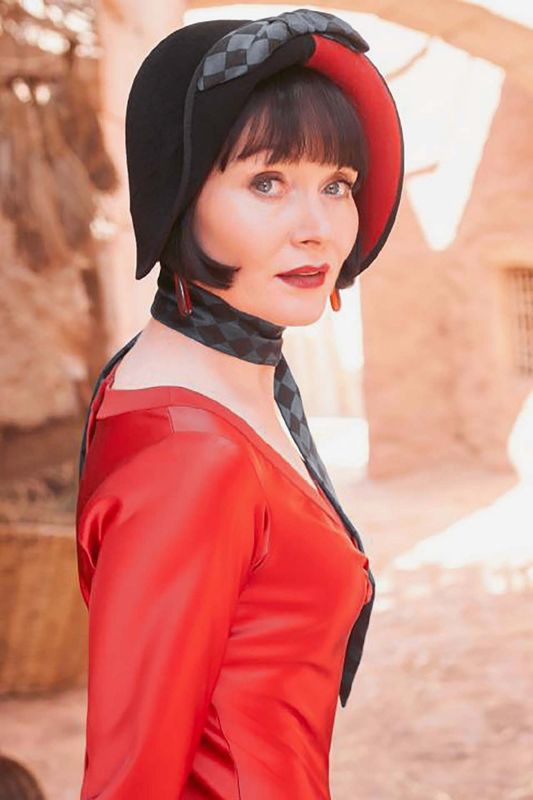SUNDAY MAY 24
The Luminaries (TVNZ 1, 8.30pm). There are an awful lot of indeterminate accents in The Luminaries; even lead Eve Hewson seems undecided about being Irish, and she is Irish. Fair play, accents can go badly wrong, so perhaps not over-egging was a consideration. Marton Csokas, always impeccable, and Himesh Patel are easily the best. The first episode was a bit of a chore – too many characters – but it’s always fun to play spot the New Zealand actor (yes, that was Paolo Rotondo underneath that 19th-century face hair) and good to know that the show has followed New Zealand production rules with a role for Mark Mitchinson. It is the law, after all. It’s episode two tonight; although you can binge the lot on TVNZ OnDemand.
MONDAY MAY 25
One Lane Bridge (TVNZ 1, 8.30pm). It’s meandered up hill and down dale – and that gay bashing seemed like it came from another era – but Ariki (Dominic Ona-Ariki) finally tunes in to his sixth sense and solves the case in tonight’s finale. Apparently, gecko tartare gives your third eye a real boost. The denouement involves everyone arming up for a rabbit hunt, which seems like a particularly New Zild way to go.
THURSDAY MAY 28
Mystery Road (SoHo, Sky 010, 9.30pm). Season two of Australian series Mystery Road is directed by heavy-hitters Warwick Thornton (Samson and Delilah and Sweet Country) and Wayne Blair (The Sapphires). This season, Aaron Pedersen’s detective Jay Swan is paired with a new local cop, played by Indigenous Australian actor Jada Alberts. It begins with fishermen netting a headless corpse in the mangroves. And the aforementioned law that all local productions must include a role for Mark Mitchinson has been extended across the trans Tasman bubble: he’s a snitty senior cop in conflict with Swan. The series has also netted Swedish acting royalty Sofia Helin, from The Bridge, who plays an archaeologist.
FRIDAY MAY 29
China on Film (Sky Arts, Sky 020, 7.00pm). Renowned cinematographer Christopher Doyle, who is known for his long-running collaboration with Wong Kar-Wai, narrates a two-part documentary depicting the history of China through film. The doco has accessed the British Film Institute China collection and spans from the first Chinese film during the Qing dynasty to the communist era. Here’s a BFI interview from last year in which Doyle discusses restoring Chungking Express, Wong’s international breakthrough hit.
STREAMING
Little Fires Everywhere (Amazon Prime Video). Reese Witherspoon must surely be on her way to becoming a Hollywood power player, if she isn’t already. It was Witherspoon and co-star Kerry Washington who developed Celeste Ng’s Little Fires Everywhere with Liz Tigelaar, who has been involved in Revenge, Bates Motel and Casual, among others, and both serve as executive producers. Four episodes, including the first and last ones, are directed by indie goddess Lynn Shelton (Your Sister’s Sister and Touchy Feely), who sadly passed away on May 16. Film-maker Nzingha Stewart (For Colored Girls) also directs two episodes.
Ragnarok (Netflix). There are an awful lot of teen shows on Netflix, most involving nascent superpowers, but at least in Ragnarok, actual Scandinavians are interpreting their own mythology. David Stakston is a terrifically good gormless teenager who discovers that he’s … well, one of the more well-known Norse gods. There’s an overt environmental message, especially about industrial pollution, and the series is filmed in one of those stunning, remote glacial landscapes. Wired reckoned Ragnarok infantalises Nordic mythology, so I presume they’ve never seen the Marvel movies.
VF48HOURS: Lockdown Film Competition (TVNZ OnDemand). The 48Hours film competition went ahead anyway – of course it did – and the results have been compiled into an easy 43 minutes presented by Madeleine Sami. All the deets are also available at 48hours.co.nz, of course.
Snort: Live (TVNZ OnDemand). It’s been a bit of a golden age for Kiwi comedy; Auckland improv comedy troupe Snort used to sell out the Basement Theatre on Friday nights until this stupid pandemic ruined everything. No matter, they’re now on the telly. If you have the TVNZ app, that is. There are eight episodes of off-the-cuff hilarity starring Alice Snedden, Chris Parker, Brynley Stent, Kura Forrester, Nic Sampson, Rhiannon McCall, Tom Sainsbury and more.
